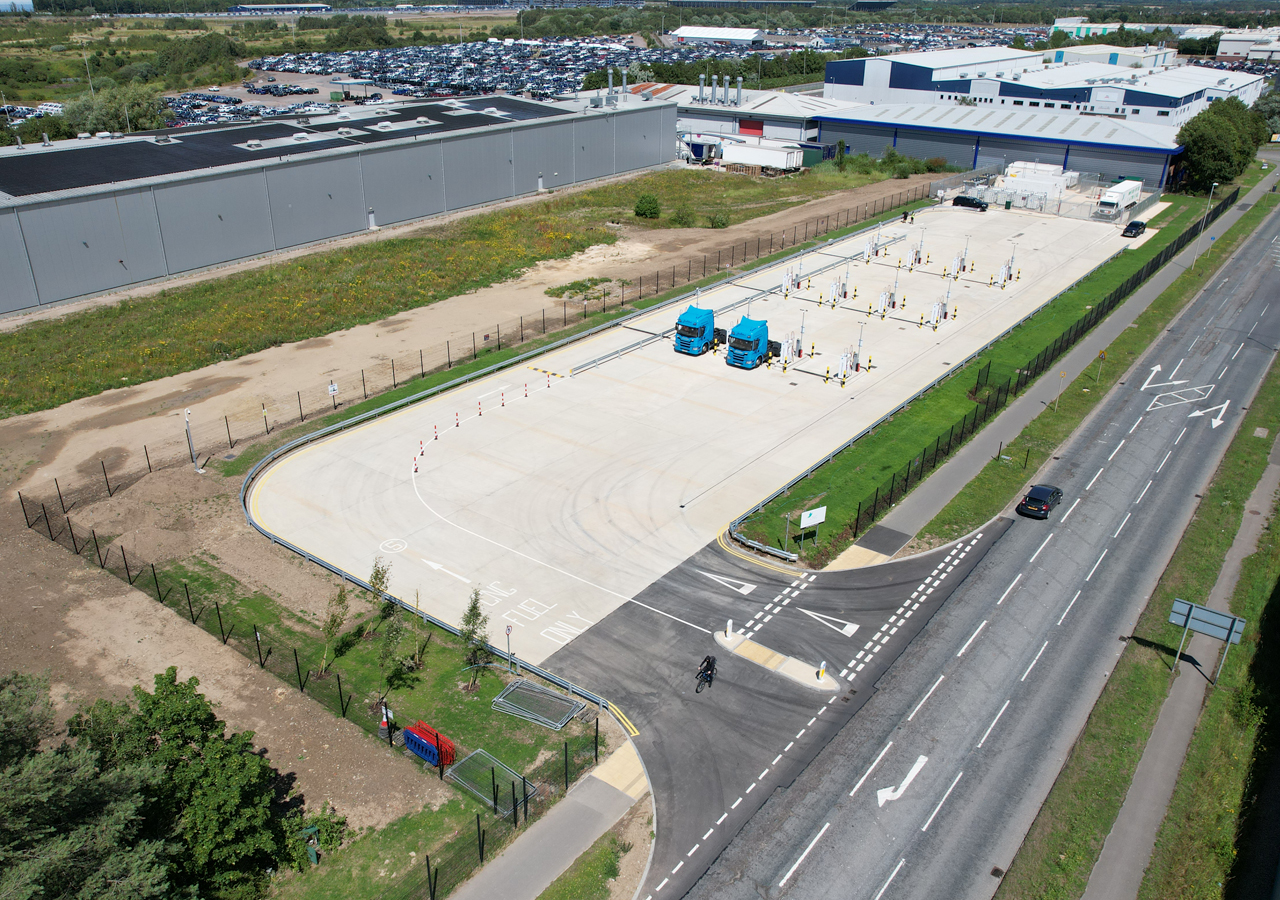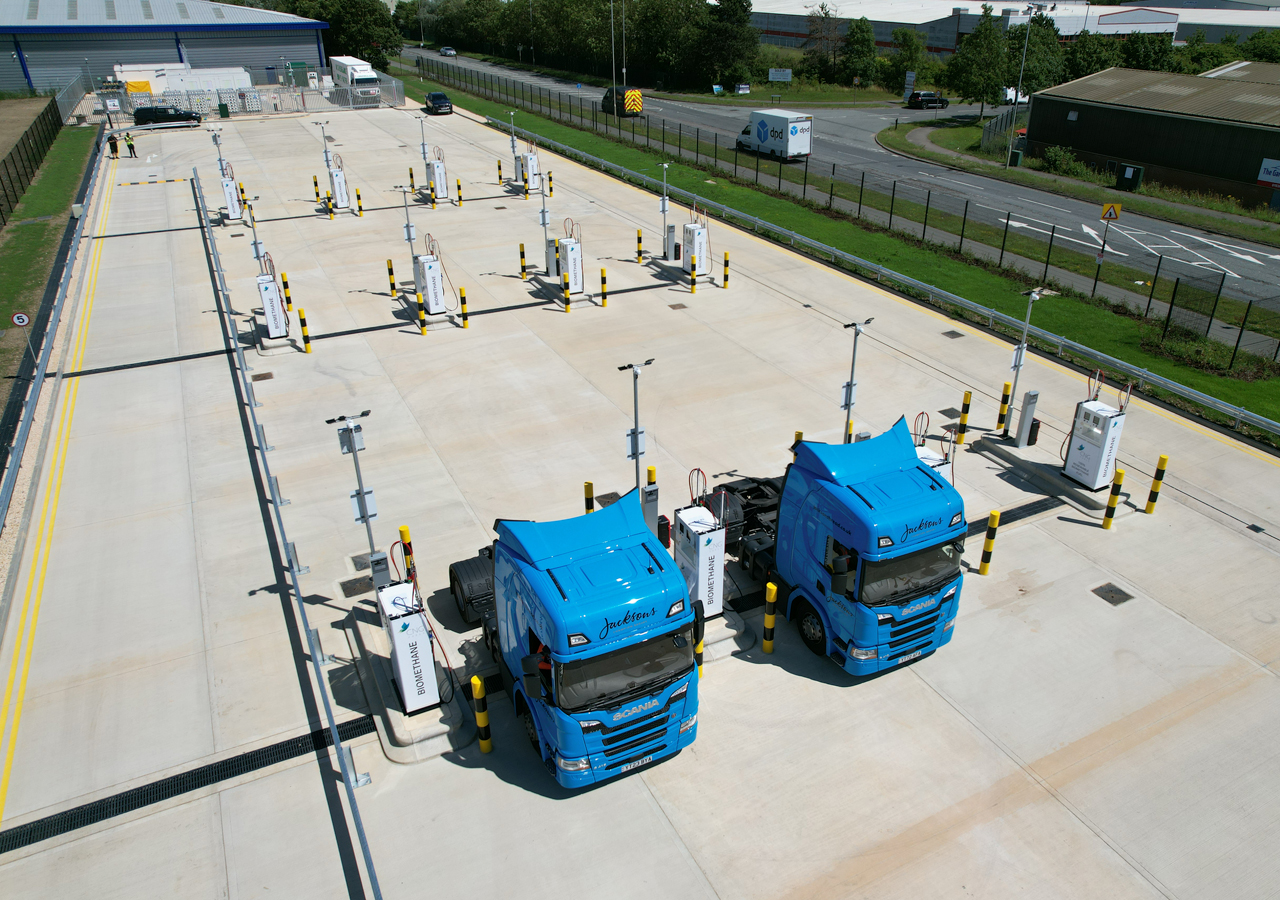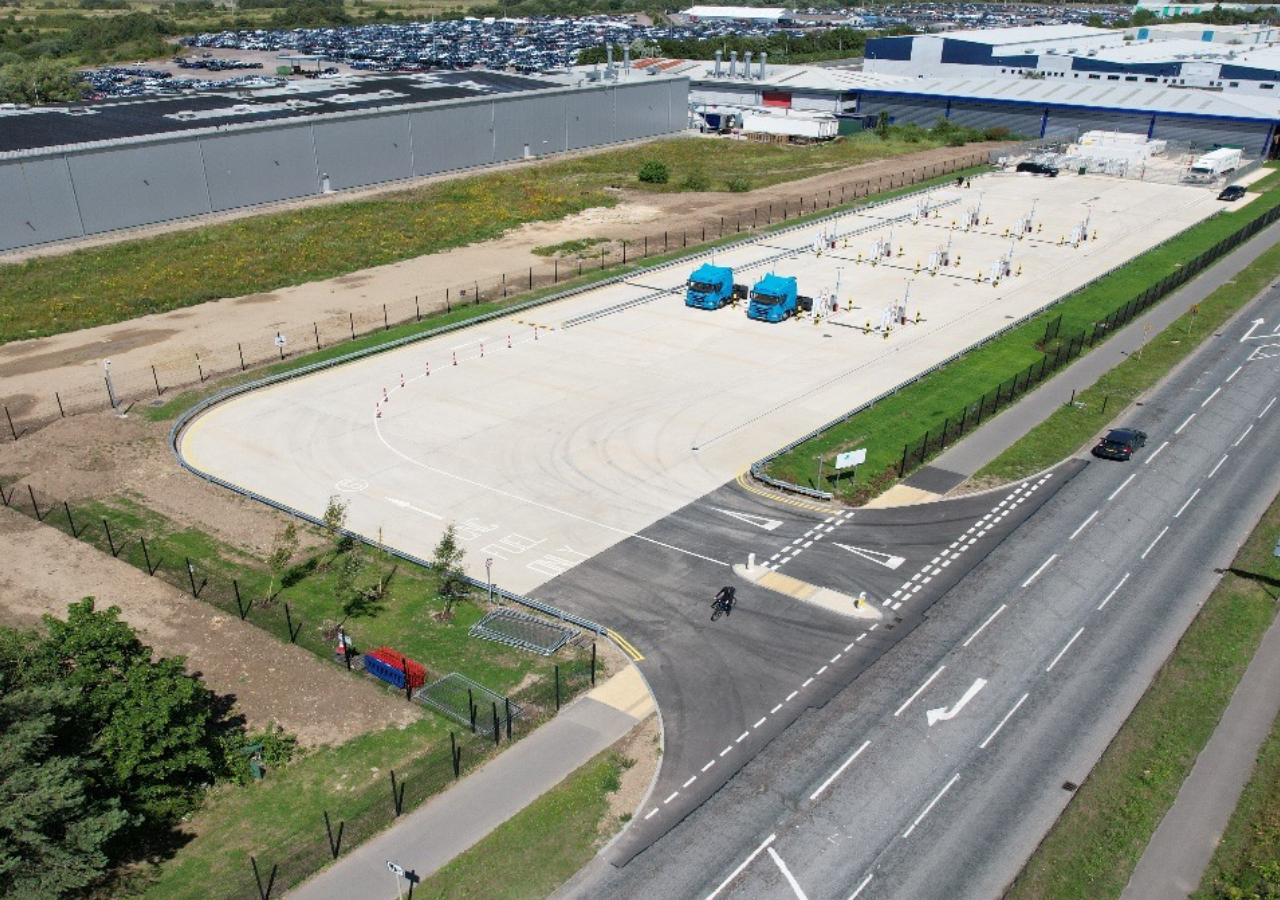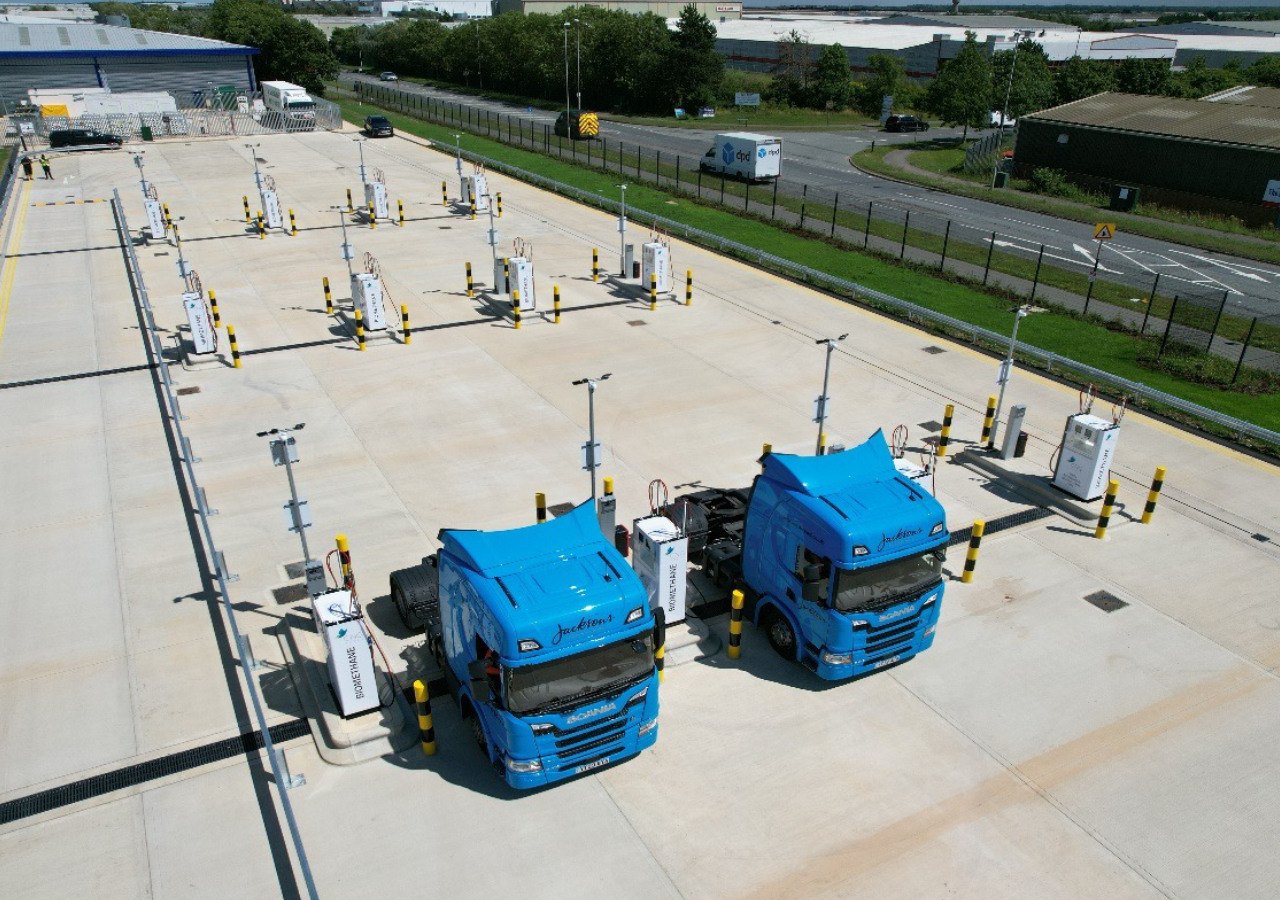Case Studies
We are committed to providing our clients with innovative and timely solutions to their engineering needs, while delivering exceptional customer service.
CNG Fuels, Corby
The station is located in the heart of Corby on the corner of Steel Road and Phoenix Way, and is the 12th large-scale Public Access Bio-CNG Refuelling station to become operational.
Corby station comprises of 12 Refuelling Dispensers, allowing more than 60 trucks to be refuelled per hour with a total capacity of more than 25 million kilograms (kg) of Bio-CNG annually, making it one of CNG Fuels’ highest capacity stations to date.
It was designed to cater for all local business in the area who wish to decarbonise their HGV fleets and will also serve passing fleets.




The stations are formed with a concrete hardstanding forecourt, designed to DMRB standards and have drainage designed to local guidance whilst following principles outlined in the CIRIA SuDS Manual. This site had drainage designed to withstand a 100 year return period + a 30% allowance for climate change of critical duration and to contain this storm as flows were restricted to pre-development greenfield QBAR (approx.. 1 in 2.3 event) a 215m³ geocellular storage tank was utilised with a Klargester Full Retention Separator to treat runoff prior to entering the public sewer network.
Aims
The main aim of any CNG station is to create a robust but sustainable led design. The fuels dispensed on-site are the present and future of HGV fuelling, leading to more than a 90% reduction in C02 emissions and up to a 40% lifetime fuel cost saving when switching from diesel.
Each station is designed to provide local businesses with the option to decarbonise their HGV fleets, whilst also serving passing fleets, adding another station to an area with high concentration of commercial vehicles.
The industry is still limited on heavily loaded solutions which are deemed as sustainable. Therefore, the aim to is to combine a mixture of manmade features which result in a betterment to natural catchments and receivers. When looking at sustainability in water design there are a multitude of elements which need to be considered. Water quantity is heavily thought to dictate the criteria of whether a design is deemed sustainable or not, but our aim is to concentrate on the other elements also such as water quality, biodiversity, and amenity.
Outcomes
As this is a refuelling facility, we are limited on the ability to create biodiverse and amenable spaces. However, there is a crucial need for these facilities for the UK to achieve Net Zero by 2050 and therefore, we used manmade features such a full retention separator which don’t require routine maintenance, rather a reactive maintenance procedure through the implementation of alarms, which reduce emissions through maintenance commutes to site.
A reduced runoff from a predeveloped site back to its greenfield state which ultimately benefits the downstream catchments. By utilizing innovative products suitable for HGV loadings we can indirectly reverse damage done to amenable spaces and improve their biodiversity by directly concentrating on water quantity and quality whilst achieving a more sustainable fuel economy through compressed natural gas sources.
